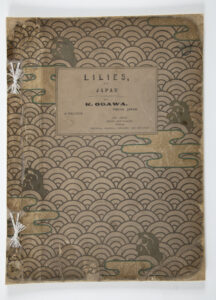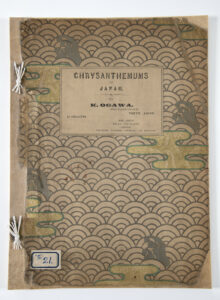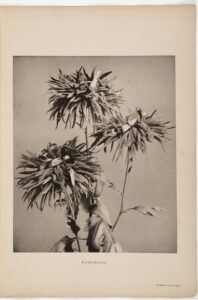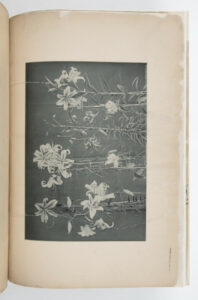Digitising Ogawa Collotypes: persevering with projects through a pandemic
For the first time, anyone from around the world can view two of the amazing items in the collection of the Museum of Domestic Design & Architecture (MoDA) from the comfort of their own home or desk.
MoDA holds three albums of images by Japanese photographer Kazumasa Ogawa (1860-1929), and we have digitized two of them, following extensive conservation work
Lilies of Japan and Chrysanthemums of Japan


Digitizing the albums makes these fragile publications available to be viewed by students and researchers in the present, while simultaneously ensuring their survival for the future.
Find out more about them and view them here – Japanese Photographs and Visual Inspiration – Museum of Domestic Design and Architecture (MoDA) (mdx.ac.uk).
Despite the delays and adaptations needed during the pandemic and various lock downs of 2020-21, the MoDA Team persevered to find ways to make the albums accessible.

Informed by learning to do things differently, we found a simple solution to making the albums more visible and accessible, inspired by the approach taken by Cardiff University Special Collections highlighted at the Discovering Collections, Discovering Communities conference 2021 , which was to upload digital copies to The Internet Archive. The Internet Archive is a non-profit, public digital library founded in 1996. Their stated mission is to provide “universal access to all knowledge” and they enable anyone to upload and freely host digital content, allowing it to be shared with the world via a range of customisable licences.

Dulwich Picture Gallery borrowed four pages from MoDA’s copy of Lilies of Japan by Ogawa to display them in their 2020 exhibition Unearthed: Photography’s Roots but digitising the whole of both albums ensures they will have an even wider audience and survive for longer. Hopefully, they will provide a primary source for anyone interested in the history of photography and photographic techniques, the relationship between Japan and the West in the 19th and early 20th century, art history, botanical images, or creative inspiration. Let us know if you use them in your research or creative practice!